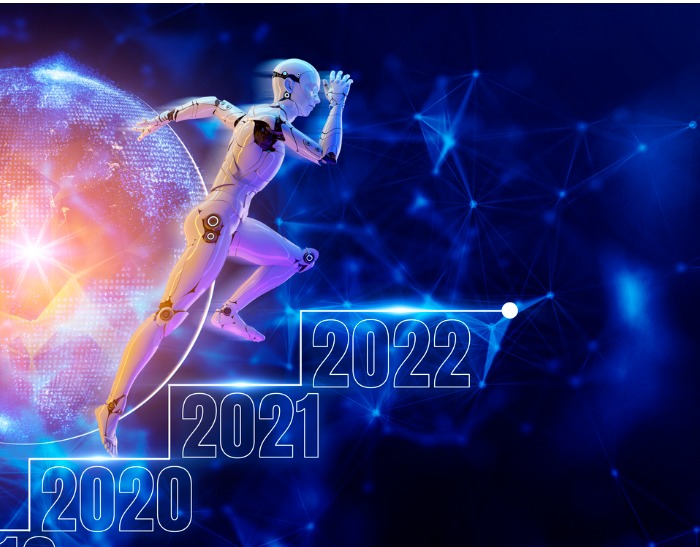Artificial intelligence (AI) is unarguably one of the most exciting technological trends today. In the past decade, we have witnessed much advancement in the AI field, with major developments taking place in AI in robotics, big data, transportation, and many other AI application areas.
According to Market Watch, the AI market value will grow from US$23.95 billion in 2018 to US$208.48 billion by 2025. With the growth of the AI market, research in the field is also growing. Currently, the United States is leading the way in AI research. However, China is not too far behind. In fact, many experts expect China to overtake the US in AI research in the next few years.
In the past few years, China has made great strides in the field of AI research. In 2018, more than 26% of the most-cited 10% of papers on AI were authored in China. The US’s share stood at 29% in 2018, which is a steep decline from 47% in 1982. Nevertheless, both China and the United States are increasing efforts in AI research to come up with AI solutions that can benefit the current and future generations.
The AI efforts of the two countries are finally starting to bear fruit. We are now witnessing AI match human intelligence and capacity in many fields. In fact, it is taking over many areas previously dominated by humans. These include (but are not limited to) language transition, speech and facial recognition, and business decision-making.
However, this is just the beginning of what is to come. Over the next decade, we are expecting several major developments and breakthroughs in AI that can potentially solve many of today’s problems and in doing so, change how we live our lives. Some of these future developments and breakthroughs in AI are discussed here.
What to Expect in AI in the Next Decade?
In the past few years, many new applications of artificial intelligence (AI) have been discovered. To be at the forefront of this AI innovation, many businesses and governments around the world are increasing their AI efforts. As a result, some of the emerging trends in AI include increased government investments in AI, a greater focus on data-driven business decisions, work automation, and the use of intelligent technology to get better insights into customer behaviors. Following is a brief discussion on each of these AI trends that we can expect to see more of in the next decade.
1. More Government Investments in AI
The greatest potential of AI lies in the opportunity to solve many of the pressing problems facing humanity today. By leveraging AI, human society can find innovative and effective ways to solve major world issues such as economic inequality and climate change. AI can assist in the resolution of these problems by providing accurate predictions and suggestions about them.
Another area where AI can be utilized to bring improvements is medical diagnoses. With AI, there is the potential to not only make an accurate diagnosis, but there is also an opportunity to treat some major diseases by detecting them early.
The good news is that many governments around the world have started to take notice of this. The potential of AI to solve many of the world’s most pressing problems is what led the US to implement a comprehensive strategy for researching and developing AI in 2016.
Currently, the US government is focusing its AI efforts and investments on areas such as social welfare, urban systems, environmental sustainability, and public health. In 2017 alone, the US government spent over $7 billion on AI and related fields.
The US government is not the only one investing heavily in AI; the European Union (EU) is also making major investments in AI development. The EU has pledged to invest up to 20 billion Euros in AI research and innovation in both the public and private sectors by 2025. Another major AI investor in China has announced plans to invest about $150 billion in the field by 2030. The idea is to establish itself as the dominant force in AI globally for many decades to come.
2. Increase in Data-Driven Decisions
Until recently, the impact of AI technology was seen only in the technology and financial services sector. However, today, its potential is recognized across many industries; businesses in many varying industries are now adopting AI to improve their decision-making and gain a competitive advantage.
More and more businesses today are focusing on using AI to improve decision making because the success of any business depends largely on the decisions that are made for it every single day. AI makes this easier by allowing organizations to analyze large amounts of data that otherwise would have impossible for the relevant people at the company to handle and extract valuable insights from.
3. Work Automation
There have been many occasions in human history where we have witnessed huge leaps in productivity and wealth; most of this can be credited to the developments and breakthroughs in work automation.
The discovery of tools made it easier to complete tasks effectively while the industrial revolution enabled never-before-seen productivity. Now, AI and robotics are promising to automate the manufacturing and operational processes completely, and this could potentially enable productivity levels ten times greater than those witnessed during the second industrial revolution. This will help businesses to maximize profits and ensure economic prosperity in the country.
4. Better Insights into Customer Behaviors
With AI, businesses everywhere have a real opportunity to take their customer relationship management (CRM) to a level never achieved before. Why do we say this? Because AI makes it possible for organizations to analyze large amounts of data related to customer behavior and associated metrics. As a result, businesses can create personalized messages targeted towards a specific segment of customers to ensure their satisfaction. Ultimately, this digital marketing tactic helps to increase sales for the business and build a loyal customer base.
These are 4 of the major AI trends that we can expect to see more of in the next decade. We can also expect to see some major AI developments and breakthroughs in the next decade. These major AI developments and breakthroughs are discussed next.
Major Developments/Breakthroughs in AI in the Next Decade
What will AI look like in ten years from now? More importantly, how will the evolution of AI in the next decade change our lives? These are some of the most commonly asked questions regarding the future of AI and its impact on our lives.
Most experts believe that AI’s impact on the future world will be largely positive. These positives will come in the shape of the following major developments and breakthroughs in AI that are anticipated in the next decade.
1. Deep Reasoning
According to experts, a major contributor to AI’s growth in the next ten years will be deep reasoning (DL). We are already witnessing the impact of deep reasoning on AI in the shape of natural language processing (NLP), speech, and vision. In the future, we will see deep reasoning helping machines, which will enhance many applications of AI.
With deep reasoning assisting them, AI-enabled machines will be able to perform a variety of cognitive tasks better, such as dealing with changing situations, perform basic planning, and make complex decisions related to a business function.
2. Improved Deep Learning
Another major development in the AI in the next decade is constantly improving deep learning. This will lead to many AI breakthroughs in the next ten years. To apply DL models at scale across a diverse and complex range of tasks, organizations will be required to increase their efficiency at training deep learning models. This efficiency will be enabled partly by increased use of unsupervised learning and partly by ‘’small data.’’
To be trained, neural networks of DL models need to be exposed to massive amounts of data. This means that millions of images may be required to train a neural network to recognize an object. It can be both time-consuming and costly to acquire relevant datasets of this magnitude. Therefore, it won’t be long before small datasets replace big data as the enabler of AI innovation.
On the other hand, some of the developments in unsupervised learning in the next decade that will help to speed, and scale DL applications include breakthroughs in reinforcement learning, transfer learning, and active learning.
3. New Hardware and Efficient Algorithms
One way to speed up AI innovation and application performance is by simplifying the learning process. Graphics Processing Units (GPUs) have indeed helped increase the speed of training and running DL models. However, this is not enough.
Computational complexity cannot be overcome with hardware alone. Instead, a combination of hardware development and algorithmic improvement is needed to accelerate the training and implementation of DL models.
AI hardware that could lead to this new reality is currently under development. These include quantum computing systems and neuromorphic chips. However, the new wave of AI innovation around DL models will involve the creation of an AI system that can mimic the thought patterns of humans, such as perception and reasoning. This will enable truly intelligent deep learning models that can think for themselves.
Final Word
As seen above, artificial intelligence (AI) is evolving at a rapid pace. In the next decade, several major developments and breakthroughs are expected in AI. These major developments will help AI become a part of every commercial sector and play a bigger role in solving some of the most pressing problems facing the world today.









